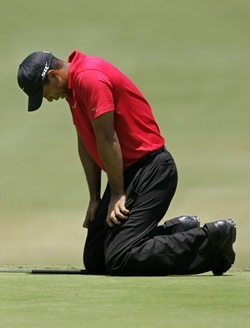
I’m always amazed at how millions of individuals use similar movement strategies during normal human development. No one invents a new way to stand up or walk or crawl, as our brains seem to instinctively know the most efficient way to move our bodies around. But, it seems we may be wired to learn how to stand properly only one time in our lives!
Well, that may be taking this a little too far, but a recent research study out of the University of Delaware found that in patients with Total Knee Athroplasty (TKA), learning to stand normally is certainly not intuitive. It is a research study which has personal implications for me, though I’ve never had a knee replacement.
Investigators wondered why patients with knee arthroplasty continued to demonstrate reduced scores on functional movement tests despite reduced pain and normalized strength. To try to answer the question, the research team analyzed a sit-to-stand task, measuring joint angles, ground reaction forces and other variables of the motion. The subject group compared patients with TKA to age-matched controls up to 1 year after the procedure.
The surprising result was that even as the quadriceps muscle strength normalized, patients continued to use substituted patterns of movement. When rising from sitting to standing, patients with TKA relied on less quadriceps muscle function and more hip extension muscle activity. They achieved this reduced quad requirement by beginning the transfer with a greater amount of hip flexion compared to controls.
The significance of this is that physical therapists must be aware that, even in the face of normalized muscle strength, patients after TKA may need to be specifically trained in the transfer in order to perform it correctly. I wonder why the body doesn’t use the quad in the pre-injury manner on it’s own? Are we only wired once? Is there some inhibition of the quads that persists for a good reason? Is it related to TKA, or is this phenomenon present after all knee surgery?
Personally, I find I use my hip extensors most of the time in my very injured knee. I notice this while climbing stairs and, especially, while cycling on my road bike where the smallest movement of the seat completely saps my power.
By the way, this study has been getting nice pick-up by the press, even earning a feature in the LA Times.
Farquhar, S.J., Reisman, D.S., Snyder-Mackler, L. (2008). Persistence of Altered Movement Patterns During a Sit-to-Stand Task 1 Year Following Unilateral Total Knee Arthroplasty. Physical Therapy DOI: 10.2522/ptj.20070045





